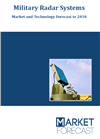Indra introduces mixed reality and Microsoft Hololens in ATM to design more efficient routes
June 12, 2017
-Indra drives augmented reality in air navigation with its development of a pioneer solution based on the Microsoft HoloLens to improve the design of air routes, reducing fuel consumption, CO2 emissions and airline costs, while at the same time contributing to minimizing sound pollution in urban areas near airports.
As a first case of possible use of this technology, Indra chose a real project: the construction of the third runway at London's Heathrow Airport. The goal was to develop a tool that would facilitate the analysis of the aircrafts' final approach to achieve ongoing landings and takeoffs that would limit fuel consumption and disturbances for nearby populations. To guarantee precise calculations, Indra used real data provided by Eurocontrol, the European Organization for the Safety of Air Navigation.
The solution takes advantage of the possibilities offered by mixed reality, combining both real and virtual worlds, enabling their real-time interaction. When wearing the Microsoft HoloLens, the user sees the takeoffs and landings of aircraft at the future Heathrow runway. The holographic images are directly projected onto the physical space at which the user is positioned.
The Indra solution will also enable the 3D graphic representation of the path the aircraft follows, and presents the user data tags on the route, identifying the aircraft, speed, height, etc. As the plane approaches, the noise of the engines increases and the user may view a volumetric representation of the environmental noise pollution generated in the area.
The user may move and approach the aircraft to see it in greater detail. When shifting one's view, the user sees the airport's runways and nearby urban areas. The system allows for interacting with the virtual world and modifying, for example, an aircraft's path to study alternative routes. Through voice commands, a user request the system to zoom, project another path, or display a different aircraft.
The future of mixed reality
In the short term, the Indra solution will offer the air traffic market other applications. One of the most immediately applicable uses could be improving the design of the sectors into which airspace is divided in a country or region, and studying the routes which cross it. This complex, 3D information cannot be correctly represented on a 2D screen. It will also support improving the design or expansion of airports so that technicians may select the most suitable location for runways and ensure that the control tower is free of blind spots.
Among the advantages offered by mixed reality, Microsoft HoloLens highlights the fact that the user views a virtual scenario without isolating oneself from the surroundings, unlike what happens with conventional 3D glasses. This enables a user to continue working while accessing additional information which is superimposed and relates with what is being seen in the real world.
This way, several persons may analyze a given virtual scenario during a work meeting while also seeing one another and interacting as usual. As this technology is optimized, its use will increase in critical operational tasks, for example, providing a controller with support by offering information associated with the real plane seen from the tower. In a control center, it could improve the decision-making process between controllers, whether at the same center or separated by hundreds of kilometers.
Beyond the air traffic sector, this technology's potential for improving communication, access to information, and cost savings is enormous. It will support maintenance tasks, so that an operator may see the layout of a building's electrical installation or the water supply network that runs beneath a street. It will also be possible for the operator to share what is being viewed with someone else who is elsewhere.
In the field of aeronautical simulation, the system could even assume the role of the entire visual part of a simulator, thereby resulting in important cost savings. In healthcare, it could be used by surgeons in planning their interventions and for medical teams from different hospitals in exchanging clinical opinions.
World leader in Air Traffic Management
Indra is a leading company in air traffic management and has supplied its systems to 160 countries. Its technology has provided support for 100 million safe landings worldwide.
In addition, it's one of the most influential companies in the SESAR technology program, upon which the future Single European Sky is based. As well, the company is implementing its next-generation iTEC system in Europe's most important control centers and leads the transformation and modernization of the continent's air traffic management.
The company continuously commits to R&D, which translates into the development of solutions like iTEC iCWP, a work station for air traffic controllers that has revolutionized the way in which they view air navigation information and how they interact with the iTEC system. Indra has allocated over €1 billion to R&D projects in the last five years.
Source : Indra

Related Studies

Military Radar Systems - Market and Technology Forecast to 2030
Publish date: November 2022 - Pages: 191

Global Commercial Avionics Market and Technology Forecast to 2026
Publish date: July 2018 - Pages: 239